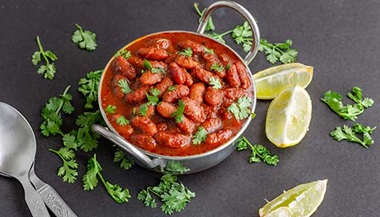Take Your Diet to the Mediterranean
Fish instead of fried chicken. Brown rice instead of a white-flour roll. A handful of nuts instead of chips. Olive oil instead of butter. And plenty of vegetables and fruit. Easy food swaps like these put the heart-healthy, life-extending power of the Mediterranean diet on your plate—simply and deliciously.
Just how much impact can diet have? A Mediterranean style of eating reduced heart disease risk by 28 to 30 percent in a large 2013 study from Spain. But you don’t have to live near the Mediterranean to get the benefits. In a 2013 study that tracked a diverse group of 6,229 American women and men, ages 44 to 84, for eight years, Johns Hopkins researchers and others found that a Mediterranean-style diet combined with regular exercise, a healthy weight, and not smoking protected against early heart disease, slowed the build-up of plaque in artery walls, and reduced risk for an early death by 80 percent.
The Power of Your Mediterranean Plate

“Our study shows us that you have the control and power to change the trajectory of your health and life,” says lead study author and Johns Hopkins expert Haitham Ahmed, M.D., M.P.H. “With a healthier diet, exercise, weight maintenance and smoking avoidance, thousands of our participants were able to live longer and free of cardiovascular disease. You can too!”
Mediterranean-style eating aids your heart in four ways, according to Ahmed:
- It helps keep cholesterol levels healthy.
- It enhances your body’s ability to absorb blood sugar (diabetes and prediabetes threaten your heart’s health).
- It cools off damaging inflammation, an immune system response triggered when the body fights perceived intruders. Acute, or one-time, inflammation is helpful in fighting viruses and bacteria, but people who are overweight, consume high levels of refined foods, and lead a sedentary lifestyle have chronic, or ongoing, inflammation, which may lead to diabetes and liver and heart disease.
- It helps arteries stay flexible and resist plaque buildups.
Nutrients in this plan work as a team to produce these benefits. These include “good” monounsaturated fat from nuts and olive oil; beneficial omega-3 fatty acids from fatty fish like salmon; and fiber, vitamins, minerals, and protective phytochemicals from whole grains and produce.
“What you don’t eat is also important,” Ahmed notes. “Large amounts of refined carbohydrates [such as sweets and white bread] can cause blood sugar spikes, which prompt the body to store fat in a different way and can lead to obesity and diabetes. Saturated fats [found in whole milk, cheese, butter, ice cream, fatty meats and poultry skin] can affect your cholesterol. All these harmful effects increase your risk of heart disease tremendously.”
Moving to the Mediterranean One Step At a Time
Take your diet to the Mediterranean with a few simple changes.
- Try oatmeal with fresh fruit and a splash of fat-free milk for breakfast instead of bacon and eggs or pancakes.
- Start lunch with a vegetable salad, dressed with a drizzle of olive oil.
- Have fruit for dessert after dinner.
For more heart-smart choices, check out these recipes from the Johns Hopkins Medicine Health Library.
“Add one healthy item to replace an unhealthy item,” Ahmed recommends. “Stick with it for three weeks, then make two more changes. Slow and steady wins the race.”
Fit Facts: Benefits of a Mediterranean Diet
(upbeat music) >> Narrator: Eating a Mediterranean diet can help reduce your risk of heart disease by 30%.
It lowers your risk of weight gain and reduces the risk of early death by up to 80%. Key ingredients include whole grains and protein-rich beans and lentils, lean proteins like fish and poultry, and low-fat dairy foods like skim milk and low-fat yogurt. For more healthy eating tips, visit hopkinsmedicine.org/food-and-nutrition.
Definitions
Whole grains: Grains such as whole wheat, brown rice and barley still have their fiber-rich outer shell, called the bran, and inner germ. It provides vitamins, minerals and good fats. Choosing whole grain side dishes, cereals, breads and more may lower the risk for heart disease, type 2 diabetes and cancer and improve digestion, too.
Saturated fat: A type of fat found in abundance in butter, whole milk, ice cream, full-fat cheese, fatty meats, poultry skin, and palm and coconut oils. Saturated fat raises levels of heart-threatening LDL cholesterol in your bloodstream. It can also interfere with your body’s ability to absorb blood sugar easily. Limiting saturated fat can help control your risk for heart disease.
Prediabetes: When blood glucose (also called blood sugar) levels are higher than normal and not yet high enough to be diagnosed with diabetes. That’s an A1C of 5.7 percent to 6.4 percent (a way to estimate your 3-month average blood sugar reading), a fasting blood glucose level of 100 to 125 mg/dl, or an OGTT (oral glucose tolerance test) two hour blood glucose of 140 to 199 mg/dl. Prediabetes is also sometimes called impaired glucose tolerance or impaired fasting glucose.
Omega-3 fatty acids (oh-may-ga three fah-tee a-sids): Healthy polyunsaturated fats that the body uses to build brain-cell membranes. They’re considered essential fats because our body needs them but can’t make them on its own; we must take them in through food or supplements. A diet rich in omega-3s—found in fatty fish, like salmon, tuna and mackerel, as well as in walnuts, flaxseed and canola oil—and low in saturated fats may help protect against heart disease, stroke, cancer and inflammatory bowel disease.
Inflammation (in-fluh-mey-shun): The redness and warmth around a cut or scrape is short-term inflammation, produced by the immune system to aid healing. But another type called chronic inflammation, triggered by compounds from abdominal fat, gum disease and other factors, lingers in the body. Research suggests this type increases the risk for heart disease, diabetes, dementia and some forms of cancer.
Arteries (are-te-rease): The blood vessels that carry oxygen-rich blood away from your heart for delivery to every part of your body. Arteries look like thin tubes or hoses. The walls are made of a tough outer layer, a middle layer of muscle and a smooth inner wall that helps blood flow easily. The muscle layer expands and contracts to help blood move.







